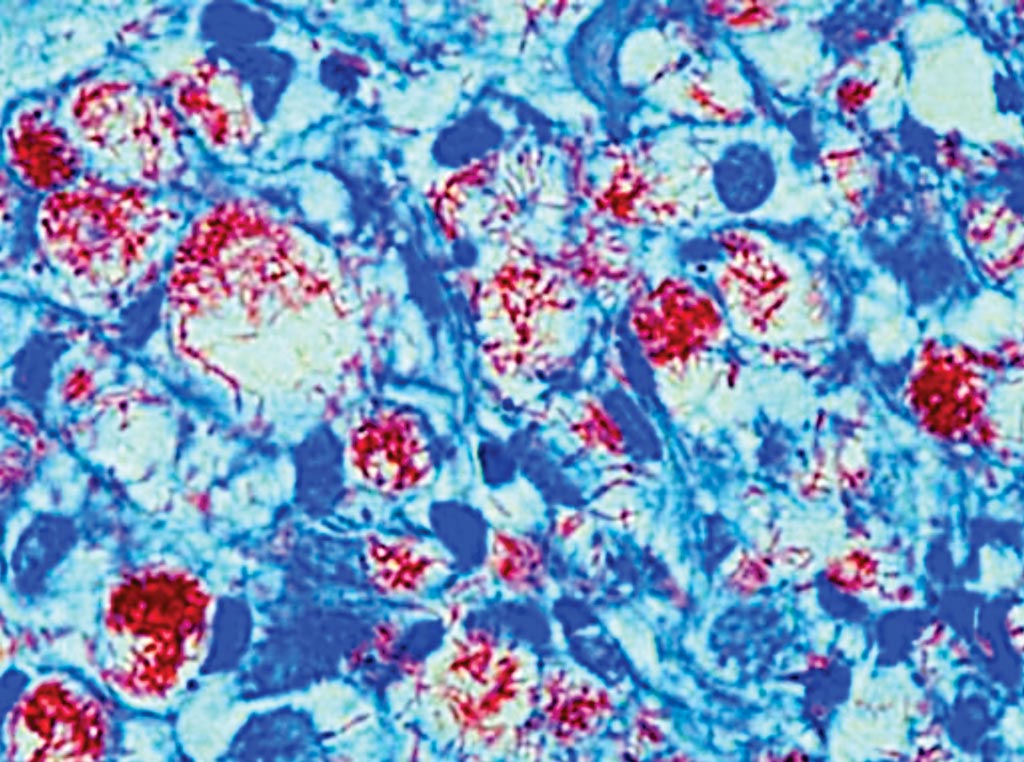Severity Biomarker Found for Leprosy and Leishmaniasis
By LabMedica International staff writers
Posted on 14 Apr 2017
Visceral leishmaniasis (VL) is a systemic, and most severe form of leishmaniasis and soluble CD163 (sCD163) levels can serve as biomarker for disease severity in several inflammatory disorder, including leprosy.Posted on 14 Apr 2017
The CD163, receptor for the haptoglobin–hemoglobin complex, is expressed on monocytes/macrophages and neutrophils. A soluble form of CD163 (sCD163) has been associated with the M2 macrophage phenotype, and M2 macrophages have been shown to down-modulate inflammatory responses.

Image: A histology of lepromatous leprosy; the bacilli are densely clustered within the cytoplasmic vacuoles of foamy histiocytes (Photo courtesy of Dr. Sampurna Roy, MD).
Scientists at the Federal University of Sergipe enrolled leprosy patients and their pertinent controls at the Leprosy Clinic. They were classified according to the Madrid criteria of clinical forms: Indeterminate Leprosy (IL, n = 9), Tuberculoid Leprosy (TT, n = 14), Borderline Leprosy (BL, n = 14) and Lepromatous Leprosy (LL, n = 10. VL patients were divided into five groups; (1) before treatment (D0-Classic, n = 33), (2) 30 days after diagnosis with VL (after treatment) (D30, n = 19), (3) severe VL at day 0 (D0-SVL, n = 13), (4) asymptomatic (delayed type-hypersensitivity (DTH)-positive, n = 11) and (5) non-endemic health controls (HC, n = 8).
SCD163 quantification was performed at the same time for all sera samples by enzyme-linked immunosorbent assay (ELISA) kit. Haptoglobin was measured using a kit. Heme-oxygenase I and Arginase-1 were measured using commercial kits. Monocytes were isolated from peripheral blood and plated. Flow cytometry was performed on a FACS CANTO II.
The scientists reported sCD163 levels were significantly higher in patients with these diseases than those observed in healthy control individuals. Further analyses on infection and disease status of leprosy and VL patients revealed a clear association of sCD163 levels with clinical parameters of disease severity. In vitro culture assays revealed that Leishmania infection induced CD163 expression on the surface of both monocyte/macrophages and neutrophils, suggesting these cells as possible sources of sCD163. FACS analyses show that the cells expressing CD163 produces both Tumor necrosis factor alpha (TNF-α) and interleukin-4 (IL-4).
The authors concluded that their results reveal sCD163 as a potential biomarker of severity of diseases caused by intracellular pathogens Mycobacterium leprae and Leishmania spp. and have a modulatory role, with a mix of an inflammatory property induced by TNF-α release, but that potentially induces an anti-inflammatory T cell response, related to IL-4 release. The study was published on March 29, 2017, in the journal Public Library of Science Neglected Tropical Diseases.













